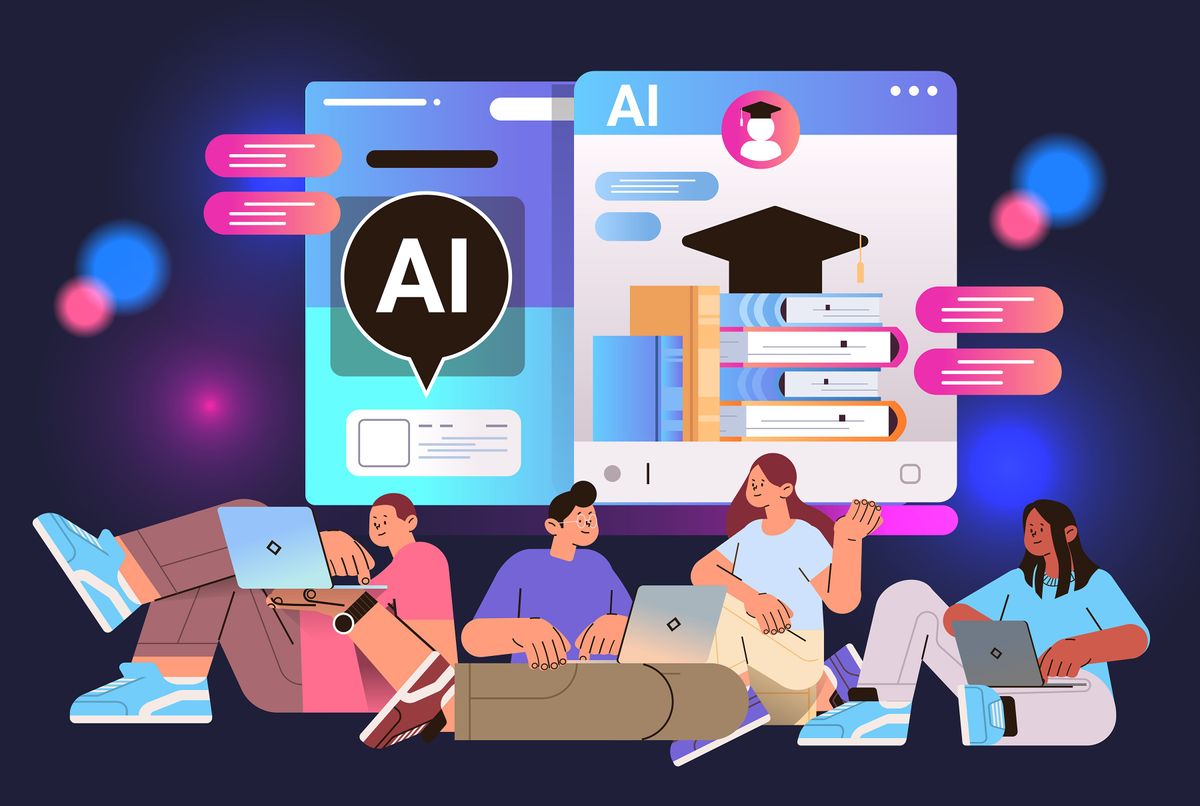The emergence of novel and powerful artificial intelligence models has led to a paradigm shift in many areas. What initially catalyzed curiosity as to the extent to which monotonous work could be outsourced to AI has emerged as a possible tool for students with personalized educational needs. Let’s welcome AI into classrooms and introduce ways to allow this revolutionary technology to educate every student and assist every teacher. We propose an augmented approach with AI, which assists with content verification, peer, educator and people engagement.
Pedagogical and education researchers are discovering that there are many ways to teach, including blended learning. The newest focus is on adaptive learning, which leverages advanced technology and data analytics to deliver personalized education, revolutionizing learning.
Traditional pedagogical methods typically entail one teacher instructing an average of 30 learners. It’s a system that can easily overlook the needs of some students. Although the model has served many students well, a significant number of learners require a more personalized approach. Unfortunately, the number of available educators and providers is a fraction of what is needed.
AI might seem intimidating, but if faculty at educational institutions use the technology appropriately, the benefits will allow for a classroom where all children are cognitively stimulated regardless of where they are in their learning journey. They will learn in a way that works for them, getting answers to questions without fear of judgment.
Teachers will be able to spend their time not only helping all their students understand what they are studying but also helping them to cultivate a love for learning.
How AI is being used in education
The number of unique learning styles and innovative teaching modalities is growing, but it’s nowhere near the speed of development of new large language and multimodal education models, which include visual, auditory, reading and writing, and kinesthetic.
Thanks to the work of AI engineers and edutech entrepreneurs such as Sam Altman of OpenAI, Sal Khan of Khan Academy, and Andrew Ng of Coursera, educators now have lesson planners, private tutors, coaches, and artists at their fingertips.
Khan Academy, for example, is integrating AI into its programs to personalize learning pathways for students, using algorithms to adapt problems and lessons based on individual performance.
“Proper use of AI minimizes the resource and equity gap among students by providing them with a tool that can be tailored to each as a unique individual.”
Khan’s AI chatbot Khanmigo is being tried out as a potential teacher. Khanmigo prompts students to learn more, incites creativity, and explains complex subjects in simple and personalized ways. The chatbot can mimic a writing coach, for example, giving suggestions to students to inspire them to write in more exciting ways.
Duolingo’s implementation of OpenAI’s GPT-4 introduces AI-generated conversational learning that can help students learn second languages more quickly by providing interactive, conversational practice that mimics real-life conversations better than traditional methods. The program also adapts to the learner’s proficiency level.
Another learning aid is Speechify’s text-to-speech model, which assists students with dyslexia.
For educators, Gradescope streamlines the grading process. It uses an AI-driven system that can provide more consistent and timely feedback to students, reducing the subjective elements of grading—which is especially important for pupils with learning difficulties.
Instructors including Ethan Mollick at the University of Pennsylvania, in Philadelphia, and Brian Hallett at IE University, in Spain, are embracing AI as a tool to create a learning environment wherein every student is valued, understood, and empowered.
Suggestions for implementing AI
Here are some ways educational institutions can use AI to augment pedagogical practices:
- Invest in training for educators, focusing on how to use AI and incorporating the technology into teaching.
- Create personalized lesson plans based on individual learning styles and needs. Ensure users are aware of current shortcomings of AI.
- Implement the technology to create more efficient assessments, saving educators time and providing quick feedback to learners.
- Explore the use of AI-based learning assistants in classrooms to answer real-time questions and offer students personalized learning paths.
- Foster collaboration between schools and AI developers to create efficient, user-friendly systems.
- Develop technology to perform administrative tasks such as attendance tracking and scheduling, allowing educators to focus on teaching.
- Prioritize research in AI in education to drive further advancements and then commit to acting on the proposals.
Embracing the augmentation of AI in schools will bring an array of tools into our educational system and seamlessly connect teaching methods with students’ optimal learning styles.
The dilemma of testing and teaching everyone on a specific metric has prevented many from realizing their full potential. Proper use of AI minimizes the resource and equity gap among students by providing them with a tool that can be tailored to each as a unique individual.
We are at a pivotal point in history. Let’s work to make it beneficial for everyone of every ability.
“Everyone is a genius,” says a popular quote attributed to Albert Einstein. “But if you judge a fish by its ability to climb a tree, it will live its whole life believing that it is stupid.”
The views expressed here are the authors’ own and do not represent positions of IEEE Spectrum, The Institute, or IEEE.
Ethan Castro is pursuing a bachelor’s degree in computer science and health and nutrition science at Brooklyn College, in New York.
Saurabh Sinha, an IEEE Fellow, is professor and executive dean of engineering at the University of Canterbury, in New Zealand.
Catherine Moran is deputy vice chancellor, Academic, at the University of Canterbury, in New Zealand.



